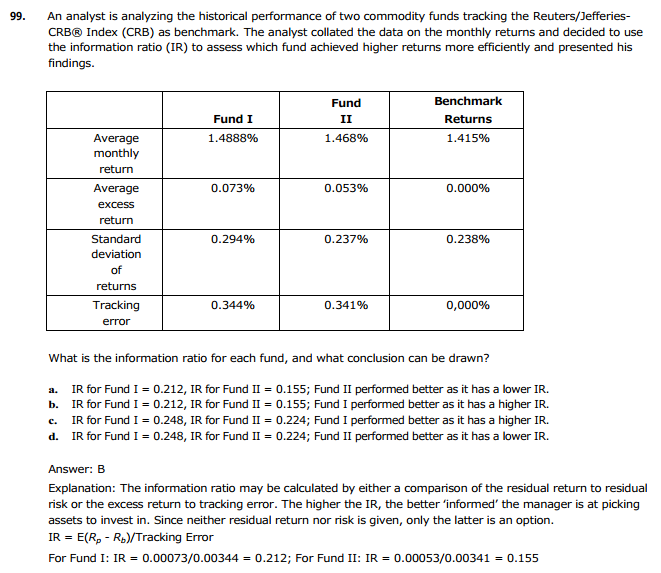Kavita.bhangdia
Active Member
Hi David,
Information ratio = Alpha / volatility of tracking error.
Jorion defines tracking error as active return -benchmark return
But that is not how bodie defines it.
Am I right??
Kavita
Information ratio = Alpha / volatility of tracking error.
Jorion defines tracking error as active return -benchmark return
But that is not how bodie defines it.
Am I right??
Kavita


